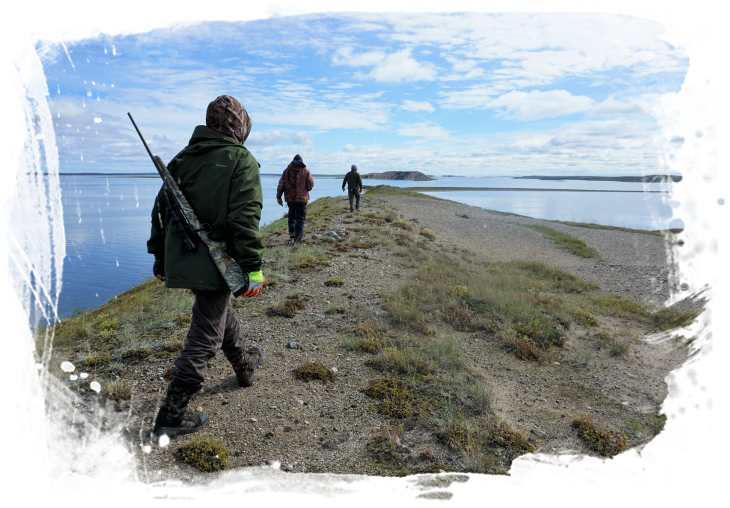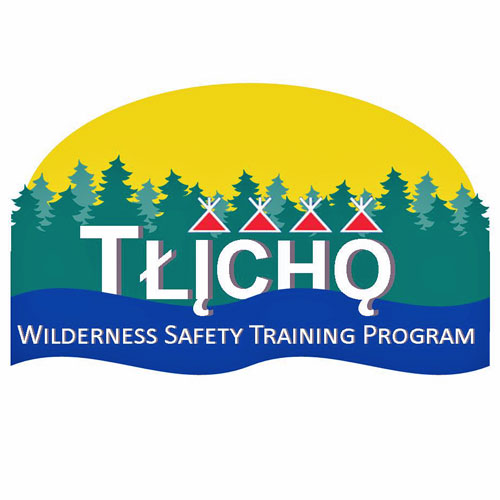 The Wilderness Safety Program was a pilot project of the Tłı̨chǫ Government in 2013-2014 emerging from the planning for the Occupational Health and Safety strategy for our government. Many programs, projects and initiatives of the Tłı̨chǫ Government require on the land safety as a first consideration in the planning and implementation of these projects.
The Wilderness Safety Program was a pilot project of the Tłı̨chǫ Government in 2013-2014 emerging from the planning for the Occupational Health and Safety strategy for our government. Many programs, projects and initiatives of the Tłı̨chǫ Government require on the land safety as a first consideration in the planning and implementation of these projects.
Aside from its full time employees, the Tłı̨chǫ Government hires a significant number of program staff on contract who are involved in a variety of programs from environmental monitoring and mine site remediation to cultural learning programs and community hunts. The vast majority of these program staff work in an outdoor setting, many on the land in remote locations.
Workers’ Safety and Compensation Commission regulations carefully outline the rules around office, commercial and industrial safety however very few guidelines exist for outdoor professionals. In 2014, in an attempt to address this gap, and as part of our commitment to the safety of our employees, the Tłı̨chǫ Government developed and began delivering the Wilderness Safety Training Program, which certifies graduates in 13 outdoor safety disciplines.
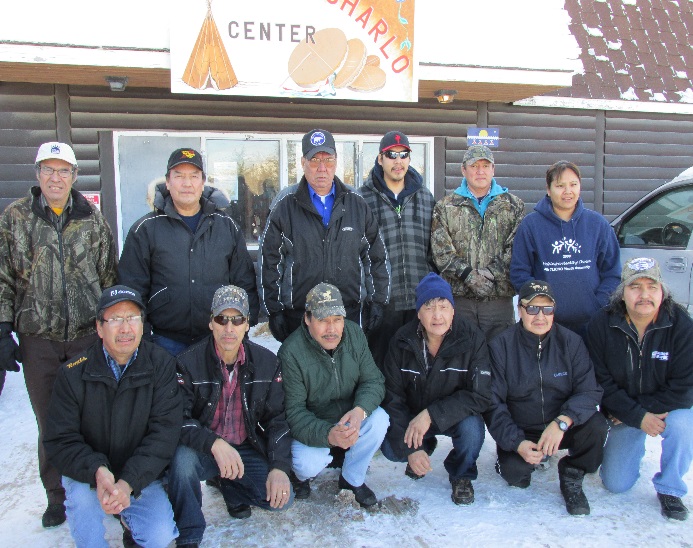
Recognition of skills
The people who are hired as program staff by the Tłı̨chǫ Government are generally recognized as outdoor experts in their communities. As people who have travelled, lived and worked safety on the land for much of their lives, these outdoor experts have an intimate and unique knowledge of their land. From an insurance and workplace safety perspective however, this knowledge is only recognized through certificates in nationally accredited safety courses. In recognition of both the lifetime of skill and knowledge possessed by Tłı̨chǫ outdoor experts, and the bureaucratic need for skill documentation, the Tłı̨chǫ Government decided to create our own culturally appropriate outdoor safety certificate program. The Wilderness Safety Training Program incorporates 13 outdoor safety certificate programs as well was workshops on traditional safety knowledge passed down for generations. These workshops are facilitated by an instructor, but are led by the participants themselves and often are opportunities for people to share their knowledge with each other.
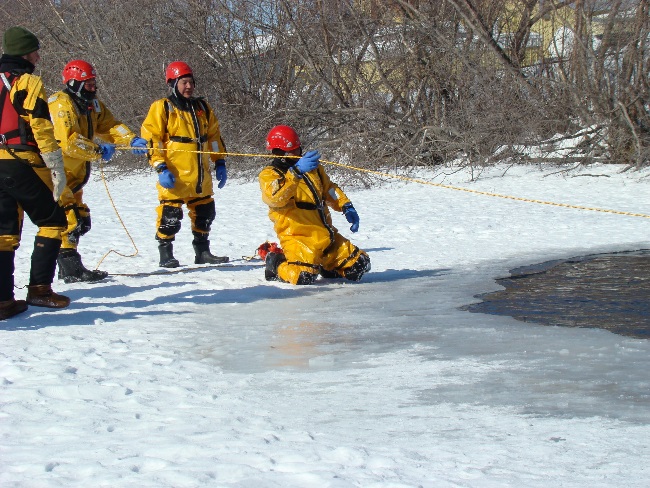
A holistic approach
The Tłı̨chǫ Government sees outdoor safety as requiring both on-the-land skills and knowledge and the health and well-being of staff on each program. For this reason, each Wilderness Safety Training Program begins with a full week of Healing and Wellness workshops in the curriculum. We want people to start the program by focusing on themselves: their health, the root causes of potentially unsafe behavior, and the land as a powerful healing tool.
Following the week of healing and wellness workshops, the focus shifts to discussions around traditional safety knowledge. Guided discussions on issues including: safety skills learned from your parents and grandparents; safe on-the-land travel practices; and elements of a traditional first aid kit help people recognize that they already have a great deal of skill and knowledge which is just as, if not more, valuable than the certification courses that take place later in the program.
The power of stories
Defining the elements of a “traditional first aid kit” can be surprising and enlightening to a non-Indigenous audience who are familiar with first aid kit components like bandages, gauze pads, hydrogen peroxide and the like. Traditional “first aid” tools, according to information from past participants, include physical items such as bear fat, rat root, and spruce gum. Even more interestingly, stories play a major role in a “traditional first aid” kit. Ancient knowledge about how people travelled, areas that are to be avoided, water quality, and how people dealt with adversity in the past are among just a few pieces of knowledge that were deemed vital among Tłı̨chǫ outdoor professionals. Place names also hold significant knowledge about safe and bountiful areas of the Tłı̨chǫ lands as well as cautions and traditionally restricted areas. Particularly for many of the older participants in the program, a solid understanding of the Tłı̨chǫ language is an important factor when talking about on the land safety.
Hard skills
When talking about various skills sets, “hard skills” is a term that is often used to define practical, tangible skills such as dressing a wound, filling an incident report, or making a fire. “Soft skills” typically denote intangible skills; interpersonal skills, leadership, listening, problem solving, etc. While the first half of the Wilderness Safety Training Program deals in significant ways with soft skills, the second half of the program focusses intensely on hard skills. The schedule is often grueling but participants report loving the opportunity for intense outdoor hands-on learning. Over the course of 6 weeks, participants take courses in: wilderness first aid, firearms safety, snow mobile safety, ice rescue, map, compass and GPS navigation, emergency preparedness, crisis management, predator defense, chainsaw safety, workplace hazardous materials information system (WHMIS), and Tłı̨chǫ Government outdoor policy requirements. While programs are often run in the winter, graduates come back together in the late spring once the ice has thawed to complete their suite of courses with canoe safety and swift water rescue certifications.
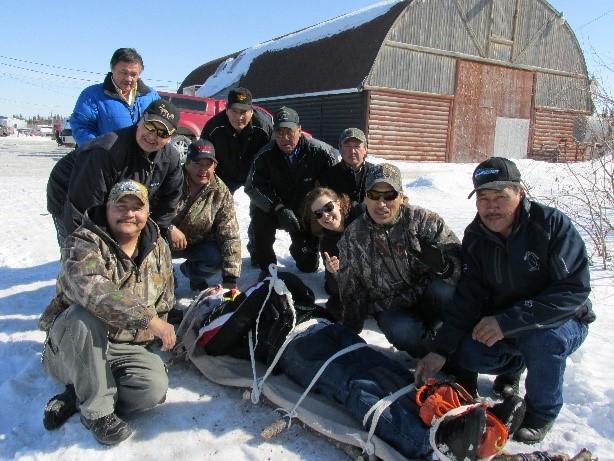
Employment and economic development
The Wilderness Safety Training Program alumni make up a network of Tłı̨chǫ citizens who are highly trained in outdoor safety with far more certification than is required for outdoor professionals in Canada. Many of these highly trained and certified people also have lifetime of unique cultural knowledge about their land, water ways, flora, fauna and cultural history. While graduates of the Wilderness Safety Training Program are highly sought after for employment on Tłı̨chǫ Government Programs as well as various programs run by the Government of the Northwest Territories, there are also potential opportunities for graduates to expand into the tourism industry since their certifications meet all of the industry’s insurance requirements. Moving forward, business development training may be added to the Wilderness Safety Training Program to create yet another way for Tłı̨chǫ people to realize the value of their cultural and traditional skills and knowledge.

